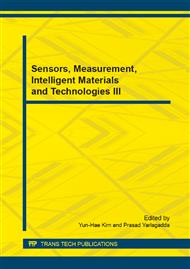p.755
p.759
p.763
p.767
p.771
p.775
p.779
p.784
p.788
Study on Wheel Run-Out Detection System Based on Harmonic-Analysis Principle
Abstract:
In order to reduce error of the wheel run-out detection system, a harmonic-analysis-based detection method was proposed to enhance the precision of online detection. The moving average filtering method was used for digital filtering between the axial and radial run-out errors so that to decrease the effect of outside noise on the measured data. Practical application shows that this system works stably and reliably on the wheel detection line and it realizes 100% online detection on the axial and radial run-out of work pieces, with the measurement error lower than 0.1mm.
Info:
Periodical:
Pages:
771-774
Citation:
Online since:
March 2015
Authors:
Keywords:
Price:
Сopyright:
© 2015 Trans Tech Publications Ltd. All Rights Reserved
Share:
Citation:


